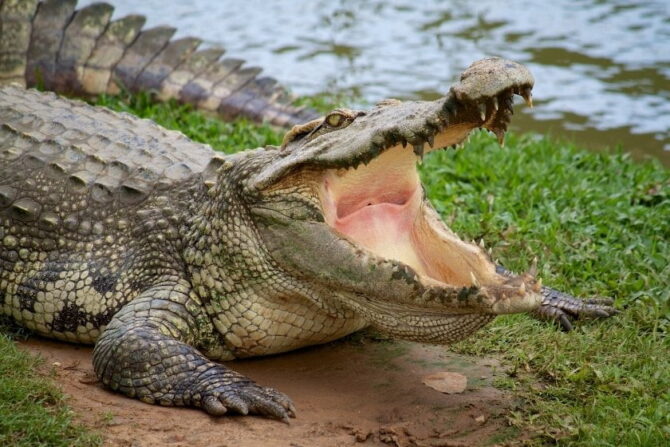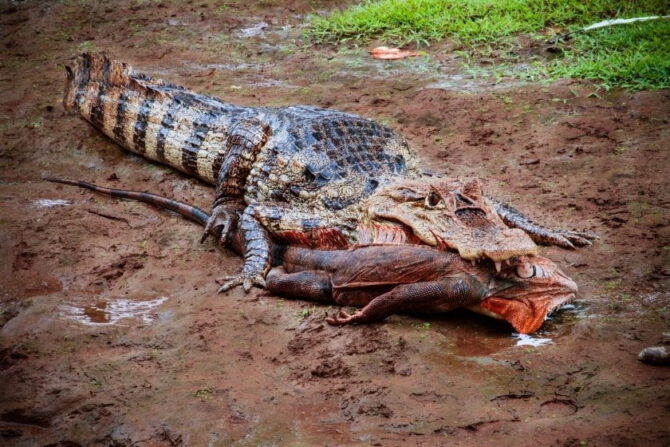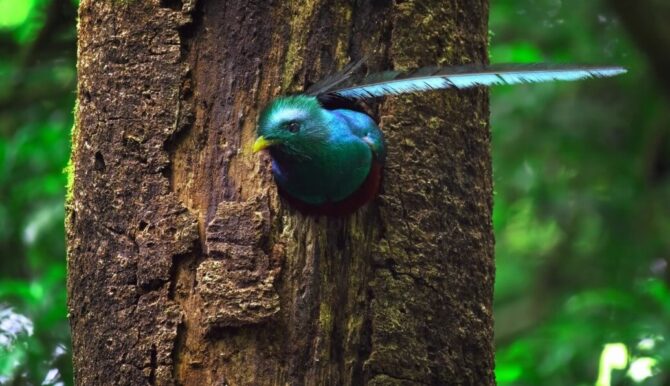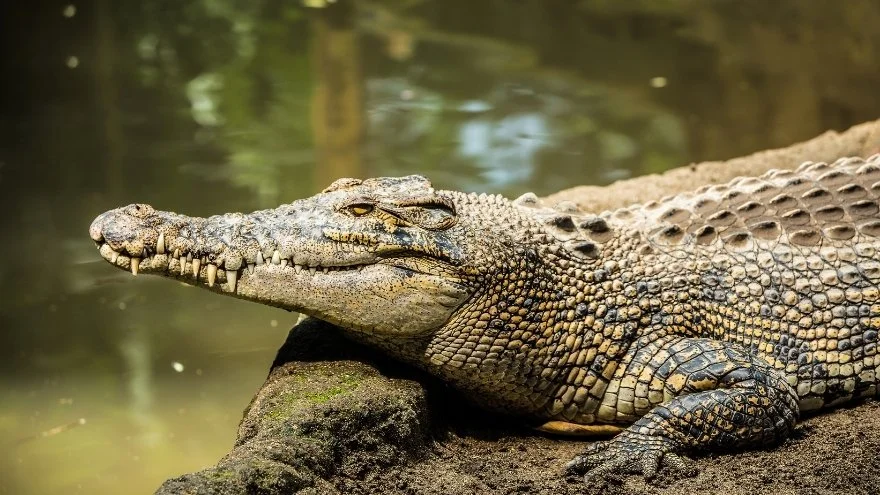Crocodiles are one of the most ancient and feared creatures on earth. They have been around for millions of years, inspiring many legends, myths, and stories.
These large and powerful reptiles have strong jaws filled with sharp teeth, which they use to clamp down on prey, crush it, and then swallow it whole.
But how do they taste their food? Do crocodiles have tongues and taste buds?
The answer is a bit complicated. Crocodiles have tongues, though not like that of humans. The reptile’s tongues are linked to the floor of their mouths and are immobile.
Crocodiles use their tongues to control body temperature, regulate salt intake, and keep water out of their airways.
Read on to find out more about crocodile tongues.
Do Crocodiles Have Tongues?

Crocodiles do have tongues, but the organ bears no resemblance to that of humans. They have one of the animal kingdom’s most varied and complicated tongues.
A crocodile’s tongue is stationary, as opposed to that of an alligator which moves. It is linked to the floor of their mouth by tissues, which are maintained in place by a membrane on the roof of their mouth.
The tongue is also very short, which may sound odd, but that doesn’t make it any weaker than an alligator’s tongue.
Another unique aspect of the crocodile’s tongue is that it doesn’t use the tongue to collect or move food, unlike many other animals.
Can Crocodiles Stick Their Tongues Out?
Crocodiles are unable to stick their tongues out physically due to a membrane in the mouth that retains the tongue.
They benefit from this because they need to open and close their jaws quickly, which is advantageous from an evolutionary perspective.
Crocodiles would probably bite their tongues if they lacked this membrane. Seeing as they use much force in their bites to capture and clamp down on prey, a loose tongue would be a risk.
Crocodile bites can exert up to 3,700 pounds of force per square inch. They would slice off their tongues if they were sticking out. 1
Why Crocodiles Don’t Need a Tongue for Feeding?

The tongue of a crocodile is immobile, as was already mentioned. A membrane constrains the movement on the roof of its mouth.
While the tongues of all reptiles are used for swallowing food, this does not apply to crocodiles.
This reptile will clamp down on the prey and deliver a lethal bite with the help of its strong jaws and pointed teeth.
After the first deadly bite, it will follow up with a few more to evenly crush and swallow its prey completely.
They don’t chew their food because doing so would involve using their immovable tongues. They instead crush it.
Do Crocodiles Have Taste Buds?
Crocodiles do have taste buds. On the upper palate of their tongue is where the buds are located. 2
Scientists believe that the crocodile’s taste buds are not precisely for tasting as humans need. Instead, their function is to help them understand where the prey is in their mouth.
What Do Crocodiles Use Their Tongues for?
What does the crocodile’s tongue serve if not for feeding? Despite being immobile, they require their tongues for a variety of functions, such as:
1. Keeping water out of their airway while submerged
The primary function of the crocodile’s tongue is to prevent water from entering its airways while underwater.
Crocodiles are not capable of breathing underwater just like the way dolphins are, and both must surface to breathe. They lack the gills to do this.
Crocodiles use their tongues to obstruct their airways while submerged to protect their lungs from water infiltration. Their throat is sealed shut by their tongue.
2. To regulate salt content in the body
Crocodiles have salt glands located at the back of their tongues to control their body’s salt levels. 3
These modified salt glands function as exocrine glands secreting salt. This is why crocs are found in saltwater, yet gators cannot survive there.
3. To regulate body heat
Because crocodiles are cold-blooded animals, they cannot control their body temperature by physiological mechanisms. They must rely on behavioral techniques.
Crocodiles sunbathe every day because they need to regulate their body temperature, but these crocs also can’t get too hot. If they do, they open their mouth to release some heat.
Frequently Asked Questions
How can crocodiles use their immobile tongues for drinking?
A thirsty crocodile needs to slightly drop its tongue in its mouth and take in a small amount of water to slake it.
Do alligators have tongues?
Yes, alligators have tongues too. Theirs run along the entire length of their snout, plus they can move their tongues, unlike their cousins, crocodiles, who cannot stick theirs out, waggle them around, use them to drink, or lick their teeth clean.
Do alligator and crocodile tongues function similarly?
Alligators and crocodiles both have tongues, but they use them in quite different ways. A crocodile’s tongue is relatively stationary compared to an alligator’s moving tongue.
Can you eat a crocodile’s tongue?
A crocodile’s tongue can be consumed and is frequently served in restaurants around the world. This meat is highly protein- and amino acid-rich. Unsaturated fatty acids, which have a high nutritional value, are also present.
What does a crocodile tongue taste like?
Crocodile tongue tastes good despite having a distinct kind of meat quality. It has an unexpectedly mild flavor that lots of people would like. It can be a suitable substitute for traditional meat and doesn’t taste at all like its wild appearance.
Wrap-Up
So, you now know that the crocodile does have a tongue, although it may not be the way we typically think of it. Still, it is quite useful to them.
The immovable tongue of a crocodile comes in handy when the reptile closes its jaws quickly. It wouldn’t want to snap off its tongue when consuming prey unintentionally.
Next Up…
- Do Crocodiles Shed Their Skin?
- Are Crocodiles Bulletproof? How Thick Is Crocodile Skin?
- Are Alligators Bulletproof? How Thick Is Alligator Skin?
- Do Alligators Shed Their Skin?
References & Notes
- Brian H., 2021. Crocodiles Have Strongest Bite Ever Measured, Hands-on Tests Show. [online] National Geographic.
- Susan R., Michael D., et al, 2014. An examination of the sensory structures in the oral cavity of the American alligator (Alligator mississippiensis), 275(11). Journal of Morphology.
- Rebecca C., Edward M., et al., Functional and morphological plasticity of crocodile (Crocodylus porosus) salt glands, 211 (9): 1482–1489.[online] Journal of Experimental Biology.
![Do Crocodiles Have Tongues & Taste Buds [Answered]](https://animalvivid.com/wp-content/uploads/2022/10/Do-Crocodiles-Have-Tongues-Taste-Buds-Answered.jpg.webp)





